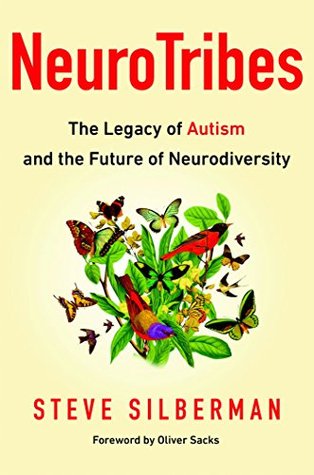More on this book
Community
Kindle Notes & Highlights
Read between
December 25, 2019 - August 7, 2020
We claim—not on the basis of theory, but on the basis of our experiences with many children like this—that this boy’s positive and negative qualities are two natural, necessary, interconnected aspects of one well-knit, harmonious personality. We could express it this way: this boy’s difficulties—which particularly affect his relationships with himself and other people—are the price that he has to pay for his special gifts.”
“The good and bad in a person, their potential for success or failure, their aptitudes and deficits—they are mutually conditional, arising from the same source,”
“Our therapeutic goal must be to teach the person how to bear their difficulties. Not to eliminate them for him, but to train the person to cope with special challenges with special strategies; to make the person aware not that they are ill, but that they are responsible for their lives.”
Epilepsy is now considered one of the most common comorbidities in autism, affecting nearly a third of the diagnosed population.
Where Asperger saw threads of genius and disability inextricably intertwined in his patients’ family histories—testifying to the complex genetic roots of their condition and the “social value of this personality type,” as he put it—Kanner saw the shadow of the sinister figure that would become infamous in popular culture as the “refrigerator mother.”
By blaming parents for inadvertently causing their children’s autism, Kanner made his syndrome a source of shame and stigma for families worldwide while sending autism research off in the wrong direction for decades.
From that point on, the terms autism, childhood schizophrenia, and childhood psychosis were used virtually interchangeably throughout the clinical literature (Kanner’s 1974 anthology of writing on autism was titled Childhood Psychosis).
By April 1948, when Time ran an article headlined “Frosted Children” (subtitle: “Diaper-Age Schizoids”), it was clear that he wasn’t going to be a stickler about insisting that his syndrome was present at birth. Addressing his colleagues at a conference in Manhattan, Kanner blasted his patients’ parents as cold perfectionists who barely had time to hug their children before rushing off to the lab or the next gallery opening.
Gina came to despise her husband’s habit of reading only the first and last dozen pages of a book, and skimming a few pages in the middle, and then pontificating about it as if he had read the whole thing. She would later say that she was never in love with him.
The design of the facility was to serve the psychological needs of the children, not the logistical convenience of the staff.
Once a child diagnosed with autism or childhood schizophrenia was placed in a state hospital, he or she was no longer treated as a child.
Bender’s preferred method of treatment at Bellevue was electroconvulsive therapy (ECT). Her young patients typically received twenty courses of ECT or more, which she claimed boosted their IQ, “stabilized” their electroencephalograms, improved their body image, made them “more normal” in general, and prompted complete “remission” in some cases.
By 1955, however, Kanner was finally beginning to see the extent of variation in the continuum for himself by following up on his original patients. Even “low-functioning” children could grow up to become “high-functioning” adults, but only if they managed to stay out of an institution and were given a chance to develop their innate gifts—just as Asperger had predicted back in 1938.
Though Letchworth was promoted to families as a progressive and humane institution, behind its ivy-covered façade it was Bedlam for children. By the 1950s, when Elaine was placed there, four thousand boys and girls were crowded into joyless dormitories built for twelve hundred patients.
The protocols of ABA, as they were initially developed, were inextricably interwoven with Lovaas’s personality, which was both dominating and disarming.
In placebo-controlled trials, Pauling’s extravagant claims for vitamin C received mixed reviews at best.
In fact, harmless forms of self-stimulation (like flapping and fidgeting) may facilitate learning by freeing up executive-functioning resources in the brain that would otherwise be devoted to suppressing them.
Using his acute powers of observation, Sacks came to realize that, instead of being incommunicative, his patients were communicating all the time—not in words, but in gestures and other nonverbal forms of utterance, particularly among themselves.
Schopler pointed out that calling autistic children “the kiss of death” in a classroom could result in kids all across the country being denied an education.
Ultimately, she adopted the term autism spectrum. She liked the sound of it, which evoked pleasing images of rainbows and other phenomena that attest to the infinitely various creativity of nature.
AUTISM MADE ITS DEBUT in the first edition of the bible of psychiatry, the DSM-I, in 1952, as “schizophrenic reaction, childhood type.” This condition was unhelpfully defined only by what it was not: “The clinical picture may differ from schizophrenic reactions occurring in other age periods because of the immaturity and plasticity of the patient at the time of onset of the reaction.”
The description of “schizophrenia, childhood type” in the DSM-II, published in 1968, when Bettelheim was the rage, was more specific, but in the wrong direction, citing “autistic, atypical and withdrawn behavior” and “general unevenness” as evidence of a “failure to develop identity separate from the mother’s.”


